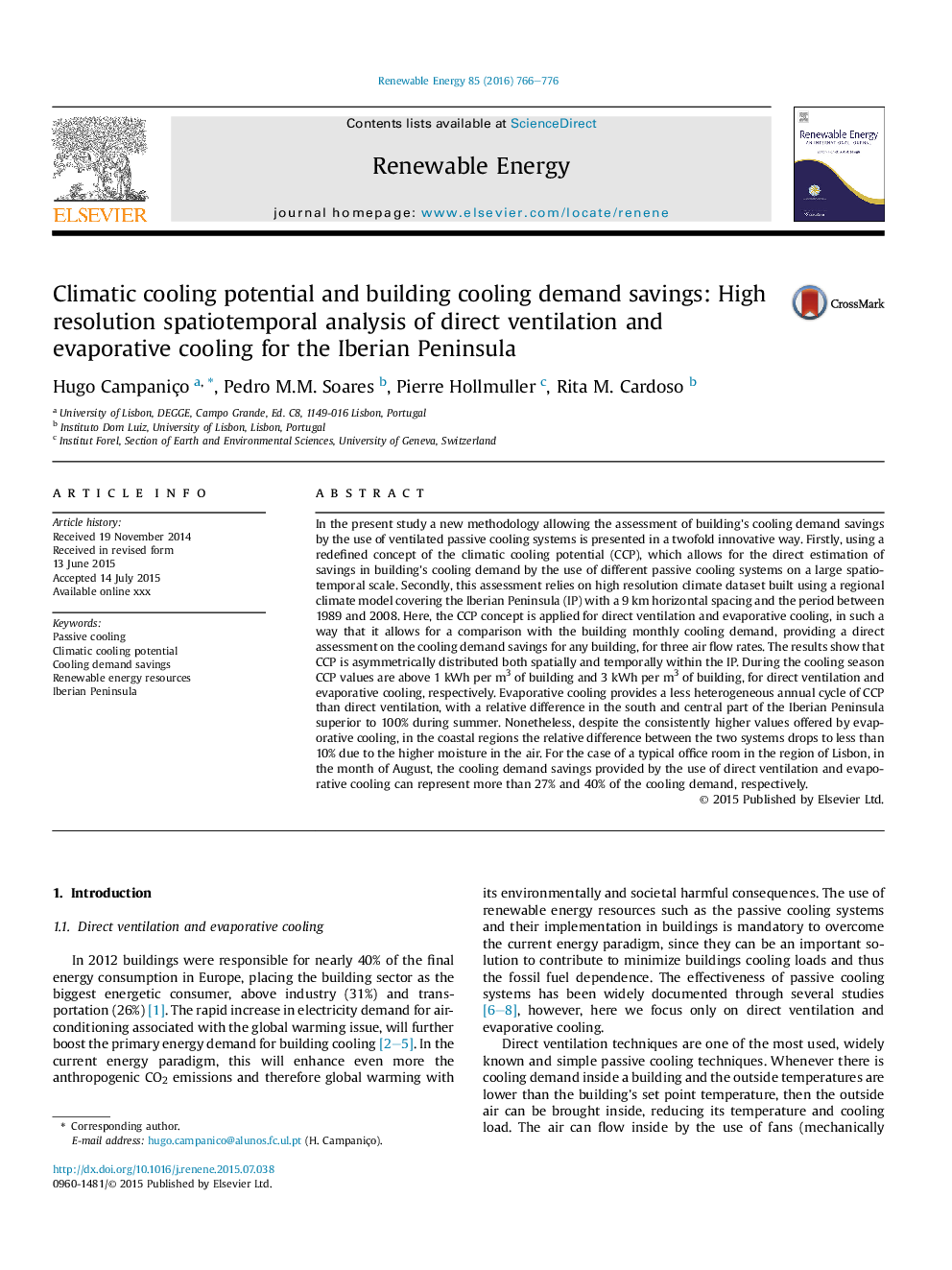| Article ID | Journal | Published Year | Pages | File Type |
|---|---|---|---|---|
| 6766861 | Renewable Energy | 2016 | 11 Pages |
Abstract
In the present study a new methodology allowing the assessment of building's cooling demand savings by the use of ventilated passive cooling systems is presented in a twofold innovative way. Firstly, using a redefined concept of the climatic cooling potential (CCP), which allows for the direct estimation of savings in building's cooling demand by the use of different passive cooling systems on a large spatiotemporal scale. Secondly, this assessment relies on high resolution climate dataset built using a regional climate model covering the Iberian Peninsula (IP) with a 9 km horizontal spacing and the period between 1989 and 2008. Here, the CCP concept is applied for direct ventilation and evaporative cooling, in such a way that it allows for a comparison with the building monthly cooling demand, providing a direct assessment on the cooling demand savings for any building, for three air flow rates. The results show that CCP is asymmetrically distributed both spatially and temporally within the IP. During the cooling season CCP values are above 1 kWh per m3 of building and 3 kWh per m3 of building, for direct ventilation and evaporative cooling, respectively. Evaporative cooling provides a less heterogeneous annual cycle of CCP than direct ventilation, with a relative difference in the south and central part of the Iberian Peninsula superior to 100% during summer. Nonetheless, despite the consistently higher values offered by evaporative cooling, in the coastal regions the relative difference between the two systems drops to less than 10% due to the higher moisture in the air. For the case of a typical office room in the region of Lisbon, in the month of August, the cooling demand savings provided by the use of direct ventilation and evaporative cooling can represent more than 27% and 40% of the cooling demand, respectively.
Related Topics
Physical Sciences and Engineering
Energy
Renewable Energy, Sustainability and the Environment
Authors
Hugo Campaniço, Pedro M.M. Soares, Pierre Hollmuller, Rita M. Cardoso,
